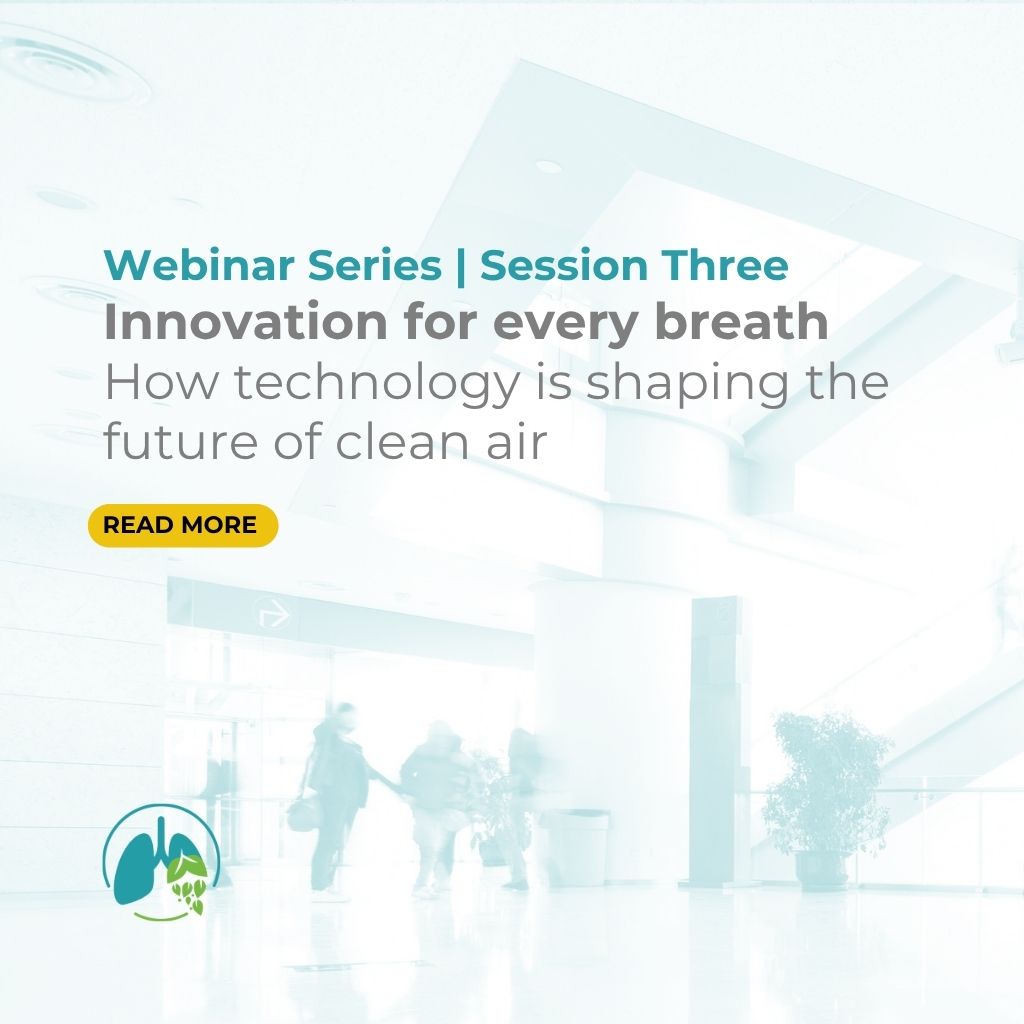Goumbook’s ‘Take a Breath’ three-part webinar series
“Breathing into the Future: Creating Healthier Indoor Spaces for Resilient Cities & Communities” webinar series concluded with a final session focused on the role of technology in transforming indoor air quality. Air quality experts highlighted affordable solutions, data-driven monitoring, standards and community engagement as critical to achieving healthier indoor environments in schools, homes, and workplaces.
Expert presentations
Dr. Srikanth Sola, cardiologist and founder of Devic Earth, shared how air pollution affects heart health. He introduced Pure Skies technology, using pulsed radio frequency to reduce PM10 and PM2.5. This scalable, energy-efficient solution tackles both indoor and outdoor pollution. Case studies from Brazil, Chile, and India showed measurable health improvements in high-pollution areas.
Faizal Hasham, environmental engineer, emphasized monitoring, data, and public engagement. Schools, workplaces, and homes benefit from low-cost sensors paired with AI for real-time, actionable insights. Filtration, ventilation, source control, and behavioral adjustments complement technology. Framing IAQ as a health and wellness issue empowers individuals and communities to take meaningful action.
Sotirios Papathanasiou, founder of the Global Open Air Quality Standards (GoAQS), highlighted universal IAQ standards for health, equity, and accessibility. GoAQS proposes a two-tier system: a starter level for limited-resource regions and an ultimate level with stricter health-based limits. Low-cost sensors enable real-time monitoring and integration with building management systems. GoAQS also promotes good practices like source control, ventilation, air filtration, and consistent monitoring.
Key insights from the panel
- Citizen Engagement: Public access to air quality data drives policy and behavioral change.
- Affordable Solutions: Small, handheld devices make indoor air quality protection accessible without high-end technology.
- Policy & Standards: Schools are a natural starting point for indoor air quality standards, expanding to workplaces and homes.
- Retrofit & Behavior: Upgrading older buildings with better HVAC, building envelopes, and AI-optimized ventilation improves air quality. Behavioral adjustments during pollution peaks are also critical.
- Education & Source Control: Preventing pollution at the source, combined with simple, health-focused messaging, empowers individuals and institutions.
Conclusion
The webinar concluded that technology, policy, education, and community engagement together drive healthier indoor environments. Clean air must become a reality for all – schools, workplaces, and homes. Affordable, actionable, and understandable solutions ensure long-term health benefits locally, regionally, and globally.
Watch the webinar recording here
Contact us: ask@goumbook.com to learn more and get involved.

